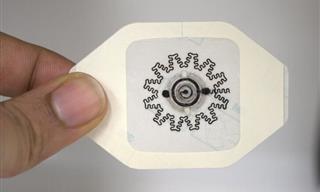We all experience stress and, when we do, that specific stressor triggers the sympathetic nervous system, causing the more primitive part of the brain to launch into a flight or fight response. When this happens, psychological changes occur such as an increased heart rate, muscle tone, blood pressure, and concentration. We maintain this heightened state of arousal until the parasympathetic system returns our body and mind to a resting state.
This flight or fight response can be adaptive or maladaptive. It’s great when you have to react rapidly to a stimulus. For example, it will serve you well if you have to jump out of the way of an oncoming car or just before you have to make a job-related presentation. However, it isn’t a good fit for ongoing stressful experiences that cause anxiety and from which there is no time for rest and recovery. For example, when you have relentless demands in the workplace or relationship difficulties at home. This chronic stress can negatively impact cognitive functioning, emotion regulation, and physical health.
Being able to manage stress is essential for creating the conditions that foster success, health, and well-being. Unsurprisingly, there are short and long-term strategies for managing your stress levels. Mindfulness can be both, and practicing mindfulness enhances cognitive functioning, improves emotion regulation, increases self-awareness, and promotes relaxation.
As a short-term strategy, we can focus on applying mindfulness in the here and now. One such strategy is to pause briefly and repeatedly throughout the day. Just shifting your attention from whatever is going on to the act of taking a single purposeful breath can make a meaningful contribution to managing stress.
The directions are very simple:
• Focus on taking a single, full breath.
• Observe (notice if you lose focus on that single, full breath).
• Refocus, if needed.
To understand how this pausing works, consider that chronic stress affects the brain in the same way that running too many programs will affect your computer’s performance. After all, the brain is a computer of sorts, and both suffer when overloaded.
Dealing with too many mental tasks, especially when you’re loaded with emotion, decreases the brain’s processing speed and triggers frustration. When you pause, you purposefully concentrate on a brief single task to help clear your mind.
Pausing works best if you practice applying the technique even in the most stressful of conditions. So, you might practice pausing:
• Before answering the phone.
• Walking to the bathroom/to get a coffee.
• While waiting for your computer to boot.
• Before responding to challenging emails.
• Before drinking or eating.
• When you wake up and before you go to sleep.
Mental fitness, just like physical fitness, involves training. Both begin with effort and instruction and both require ongoing practice and perseverance. Both also become easier and more effective as baseline fitness increases.
Three Mindful Breathing Exercises
Exercise 1
1. Find a relaxed, comfortable position. You could be seated on a chair or on the floor on a cushion. Keep your back upright, but not too tight. Let your hands rest wherever they’re comfortable. Place your tongue on the roof of your mouth.
2. Notice and relax your body. Try to notice the shape of your body, its weight. Allow yourself to relax and become curious about your body seated here – the sensations it experiences, the touch, the connection with the chair or the floor. Relax any areas of tightness or tension. Just breathe.
3. Tune into your breath. Feel the natural flow of breath – in, out. You don’t need to do anything to your breath. Not long, not short, just natural. Notice where you feel your breath in your body. It could be in your abdomen, your chest, your throat, or your nostrils. See if you can feel the sensations of breath, one breath at a time.
4. Be kind to your wandering mind. Now as you do this, you might start to notice that your mind is wandering. If this happens, it’s not a problem. It’s natural. Just notice that your mind has wandered, and then redirect your attention back to your breathing.
5. Stay here for five to seven minutes. Notice your breath, in silence. From time to time, you’ll get lost in thought, then return to your breath.
6. Check in before you check out. After a couple of minutes, once again notice your body, your whole body, seated here. Let yourself relax even more deeply and then offer yourself some appreciation for doing this practice today.

Exercise 2
1. Sit in a comfortable position with your spine straight and head inclined slightly forward. Gently shut your eyes and take a couple of deep breaths.
2. Now, let your breath come naturally without trying to influence it. Ideally, it will be quiet and slow, but depth and rhythm may vary.
3. To begin the exercise, count “one” to yourself as you exhale. The next time you exhale, count “two,” and so on up to “ten.” Then begin a new cycle, counting “one” on the next exhale.
4. Do this for ten minutes.
Never count higher than “ten,” and count only when you breathe out. You’ll know that your attention has wandered when you find yourself up to “twelve,” “fourteen,” or “sixteen.”
Exercise 3
1. Sit with your back straight. Place the tip of your tongue against the ridge of tissue just behind your upper front teeth, and keep it there throughout the entire exercise.
2. Exhale completely through your mouth, making a whoosh sound.
3. Close your mouth and inhale quietly through your nose while counting to four in your head.
4. Hold your breath for a count of seven.
5. Exhale completely through your mouth, making a whoosh sound to the count of eight. This is one breath, now inhale again and repeat the cycle three more times for a total of four breaths.
Source: drweil
 Go to BabaMail
Go to BabaMail

























































